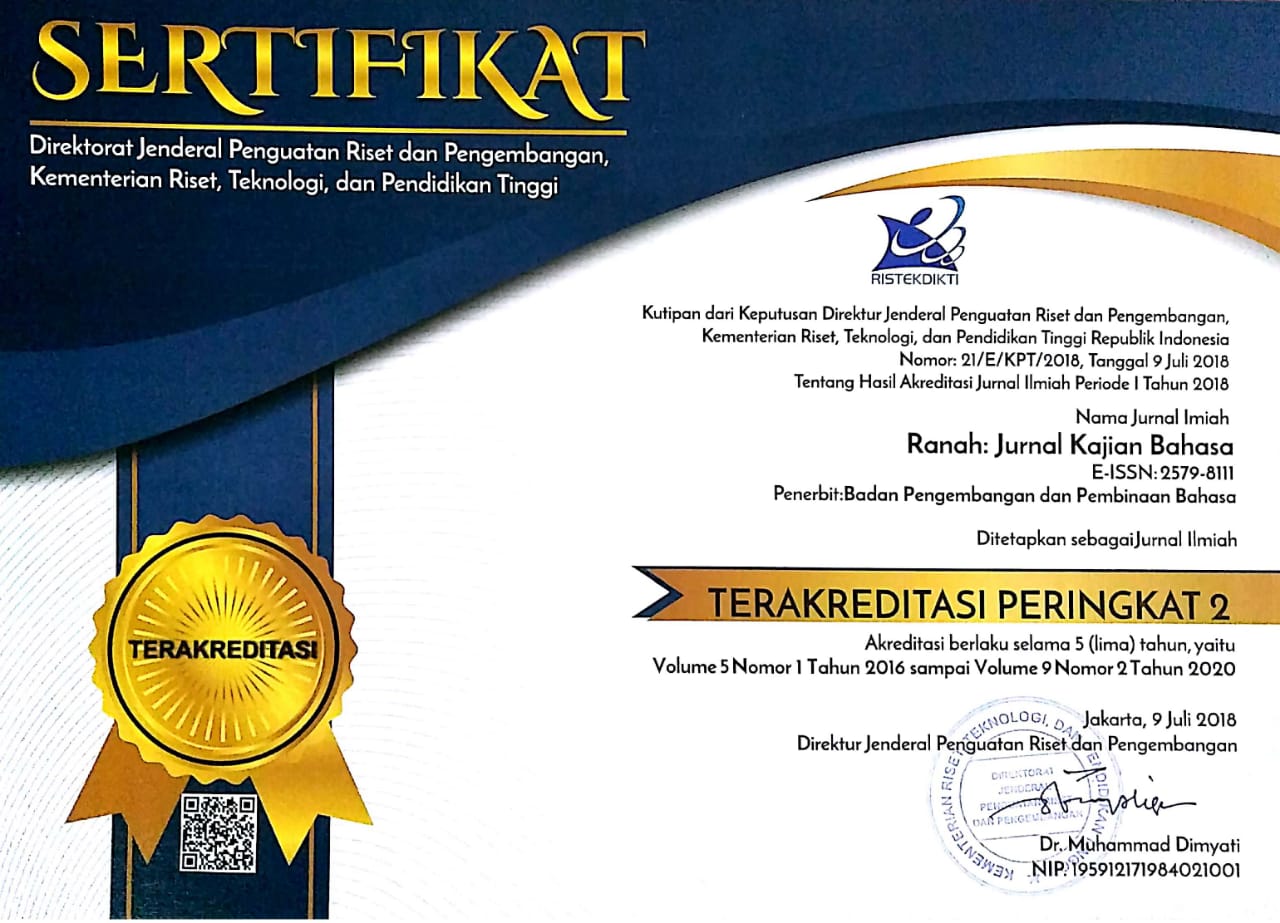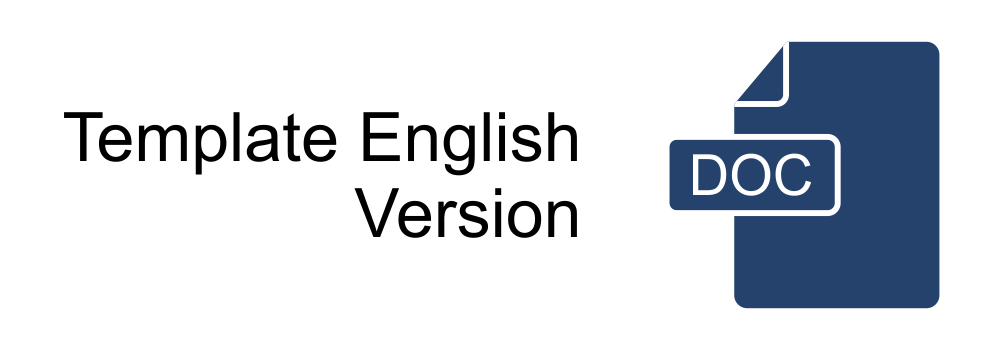Examining Word List and Processes in Law of The Republic of Indonesia Number 6 Year 2011
Abstract
This research tries to figure out the word list and the types of processes in Law of the Republic of Indonesia No 6 of Year 2011 concerning immigration. The research method applied in this research is descriptive method to describe the word list and the process in each data. Based on the result of the data analysis, firstly, it was found that the word “yang” is the highest frequency gramatically, while “pasal” is the highest frequency lexically. Secondly, it was reported there are four different processes; they are material process, mental process, relational process, and verbal process. Among the processes, the dominant process applied in Law of the Republic of Indonesia No 6 Year 2011 concerning Immigration is the verb “dipidana” as material processes, “menolak” as mental processes, “melarang” as verbal processes, and “adalah” as relational processes.
Abstrak
Tujuan penelitian ini untuk mendeskripsikan kosakata dan jenis-jenis proses dalam Undang-Undang Republik Indonesia Nomor 6 Tahun 2011 tentang Keimigrasian. Metode penelitian yang digunakan dalam penelitian ini adalah metode deskriptif untuk mendeskripsikan kosakata dan proses dalam setiap data. Berdasarkan hasil analisis data, pertama ditemukan bahwa kata “yang” secara gramatikal memiliki frekuensi tertinggi, sedangkan secara leksikal kata “pasal” memiliki frekuensi tertinggi. Kedua, ditemukan empat proses yang berbeda, yaitu proses material, proses mental, proses relasional, dan proses verbal. Di antara proses-proses tersebut, proses yang dominan diterapkan dalam UUD RI No 6 Tahun 2011 tentang Keimigrasian adalah verba “dipidana” sebagai proses material, “menolak” sebagai proses mental, “melarang” sebagai proses verbal, dan “adalah” sebagai proses relasional.
Keywords
Full Text:
PDFReferences
Ariani, M. G., Sajedi, F., & Sajedi, M. (2014). Forensic Linguistics: A Brief Overview of the Key Elements. Procedia - Social and Behavioral Sciences, 158, 222–225. https://doi.org/10.1016/j.sbspro.2014.12.078
Bloor, T., & Bloor, M. (2004). The Functional Analysis of English. London: Hodder Education. https://doi.org/10.4324/9780203774854
Coulthard, M., & Johnson, A. (2007). An Introduction to Forensic Linguistics. New York: Routledge. https://doi.org/10.4324/9780203969717
Dewansyah, B. (2015). Perkembangan Politik Hukum dan Kebutuhan Hukum Keimigrasian Indonesia: Menjawab Sebagian, Melupakan Selebihnya. Hasanuddin Law Review, 1(2), 140–162. https://doi.org/10.20956/halrev.v1i2.88
Fontaine, L., Barlett, T., & O’Grady, G. (2013). Systemic Functional Linguistics: Exploring Choice. In L. Fontaine, T. Bartlett, & G. OGrady (Eds.), Systemic Functional Linguistics: Exploring Choice. Cambridge University Press. https://doi.org/10.1017/CBO9781139583077
Halliday, M. A. K., & Matthiessen, C. M. I. M. (2004). An introduction to functional grammar (Vol. 3rd). New York: Hodder Arnold.
Jaelani, A., & Sujatna, E. T. S. (2014). The Sequence of Ideational Grammatical Metaphor Wording Technique in Historical Text: A Systemic Functional Linguistic Approach. International Journal of Applied Linguistics & English Literature, 3(2), 194–200. https://doi.org/10.7575/aiac.ijalel.v.3n.2p.194
Matthiessen, C. M. I. M. (2013). Applying systemic functional linguistics in healthcare contexts. Text & Talk, 33(4–5), 437–447. https://doi.org/10.1515/text-2013-0021
Mehmood, S., Ahmad, Z., & Khan, A. A. (2016). Dynamic relationships between tourist arrivals, immigrants, and crimes in the United States. Tourism Management, 54, 383–392. https://doi.org/10.1016/j.tourman.2015.12.010
Olsson, J., & Lunchjenbroers, J. (2013). Forensic Linguistics. London: Bloomsbury.
Rubtcova, M. V., & Pavenkov, O. V. (2019). Forensic Linguistic Examination of Russian Advertising Texts in the Sphere of Tourism. In Academicsera – 384th International Conference on Multidisciplinary Research & Practice(ICMRP).
Sujatna, E. T. S. (2012a). Applying Systemic Functional Linguistics to Bahasa Indonesia Clauses. International Journal of Linguistics (IJL), 4(2), 134–146. https://doi.org/10.5296/ijl.v4i2.1506
Sujatna, E. T. S. (2012b). Sundanese Verbs in Mental Processes. International Journal of Linguistics. https://doi.org/10.5296/ijl.v4i4.25777
Sujatna, E. T. S. (2013). Understanding Systemic Functional Linguistics. Bandung: Unpad Press.
Udina, N. (2017). Forensic linguistics implications for legal education: creating the e-textbook on language and law. Procedia - Social and Behavioral Sciences, 237, 1337–1340. https://doi.org/10.1016/j.sbspro.2017.02.219
DOI: https://doi.org/10.26499/rnh.v10i1.1544
Refbacks
- There are currently no refbacks.








